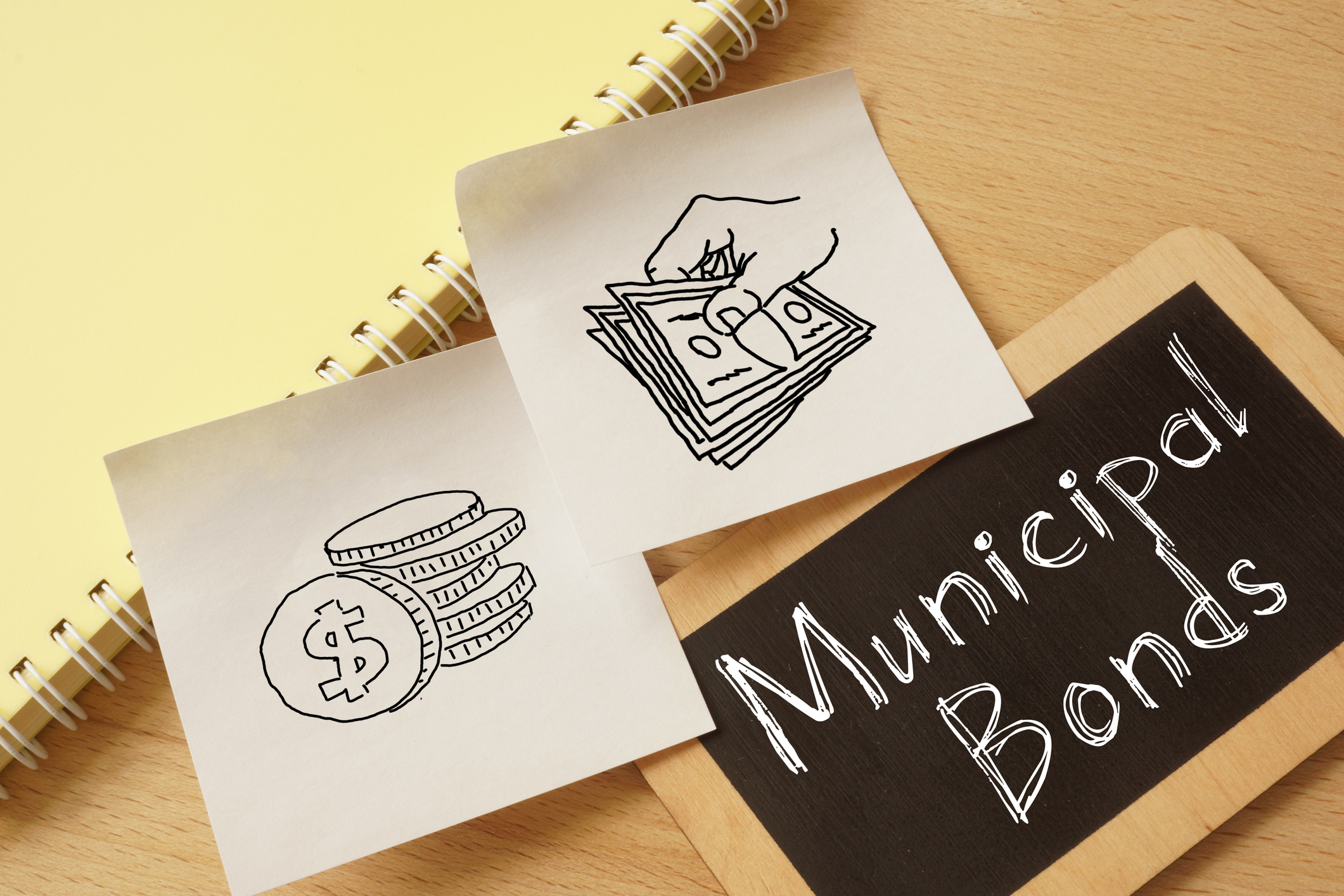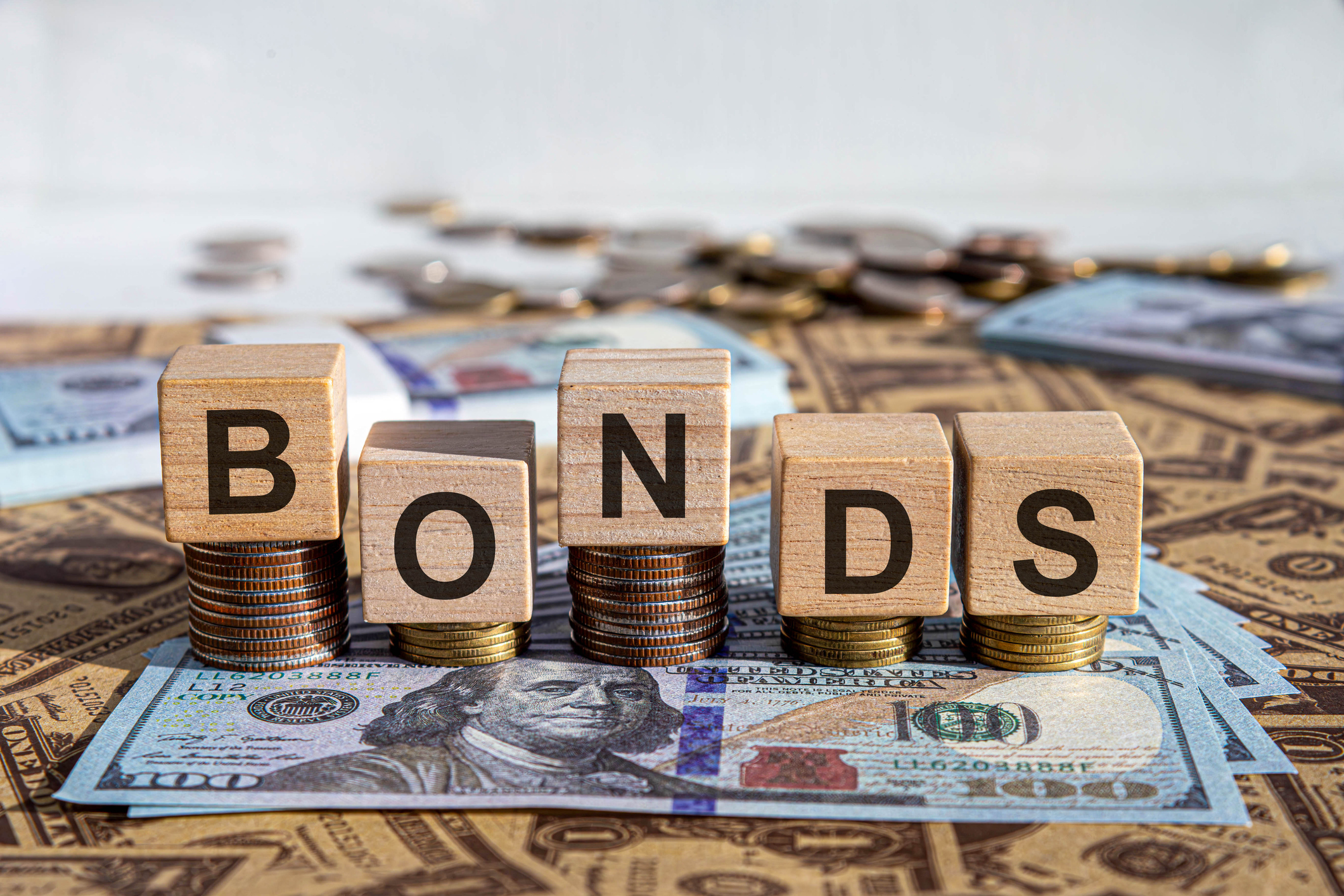Bond Basics: Municipal Bonds (Munis)
The higher your tax bracket, the more you'll benefit from Munis — bonds issued by state and local agencies.


Bonds help add diversity to your portfolio and control risk. But they can be complicated. Municipal bonds (Munis) are lower risk and have some tax advantages.
We can help you understand the basics of municipal bonds and make them work for you.
"Municipal bond" is a catch-all name that describes the debt issues of cities and towns, states and territories, counties, local public-housing authorities, water districts, school districts, and similar governmental or quasi-governmental units.
From just $107.88 $24.99 for Kiplinger Personal Finance
Become a smarter, better informed investor. Subscribe from just $107.88 $24.99, plus get up to 4 Special Issues

Sign up for Kiplinger’s Free Newsletters
Profit and prosper with the best of expert advice on investing, taxes, retirement, personal finance and more - straight to your e-mail.
Profit and prosper with the best of expert advice - straight to your e-mail.
Tax advantages of municipal bonds
Interest income from municipal bonds is exempt from federal income tax. In addition, municipal bonds issued within your state may be exempt from state and local taxes.
If you buy out-of-state municipal bonds, you will likely be liable for state and local income taxes on that interest. This favorable tax treatment makes municipal bonds more valuable than they appear at first glance.
And the good news for municipal bond investors, at least for now, is that President Donald Trump's "One Big, Beautiful Bill" was passed by the House of Representatives keeping the current federal tax exemption for munis intact.
Comparing bond yields
Municipals can pay less interest than corporate bonds of comparable quality and still deliver the same (or better) after-tax yield. The higher your tax bracket, the more valuable this tax-exempt feature becomes.
A simple formula can show you exactly how valuable tax-free income can be.
For instance, if you have a choice between a taxable corporate bond yielding 7% and a tax-free municipal bond yielding 5%. Which is the better deal? The answer depends on your tax bracket.
What is the tax-equivalent yield?
The tax-equivalent yield helps to fairly compare the yield of a taxable and tax-exempt bond.
When considering an investment in a tax-exempt security, such as a municipal bond, you may forget that the yield on a municipal bond is not directly comparable to the yield on a taxable security.
Unlike the yield on a tax-exempt security, which is not subject to federal income taxes and, in some cases, state and local income taxes, the yield on a taxable security reflects its pre-tax yield – which can create an unfair comparison to the benefits of a tax-exempt security.
Consider which of the following is a better bargain – a taxable corporate bond yielding 7% or a tax-free municipal bond yielding 5%.
The answer is that it depends on the individual investor's tax rate, since that has a significant impact on the results of a tax-equivalent yield.
A simple formula can show you exactly how valuable tax-free income can be.
Tax-equivalent yield is determined by taking the yield of a tax-exempt bond and dividing it by one minus an investor's federal income tax bracket.
Here's how to figure it: tax-free rate/1 - federal tax bracket = taxable-equivalent yield. (Note: The following example does not include the impact of state income taxes.)
Say you're in the 25% federal income-tax bracket. Therefore, your taxable-equivalent yield would equal the tax-free rate of 5% divided by 1 minus 0.25, or 0.75. The answer: 6.67%. In this case, you're better off with the taxable bond.
But what if you're in the 33% bracket? The equation now says to divide 5 by 0.67, which produces a taxable-equivalent yield of 7.46%.
Now, a 5% tax-free yield is better than a 7% taxable yield. That's what makes munis most attractive to people in the upper tax brackets. For those that pay the most in taxes, 35%, the taxable-equivalent yield is 7.59%
What about state income taxes? Tax breaks on your state income taxes can boost your taxable-equivalent yield significantly, especially if you live in a high-tax state.
Most states don't tax the interest on bonds issued by municipal authorities within their own state. A few states don't tax municipal-bond interest regardless of where it comes from.
Tax swaps
Tax swapping is especially suited to munis and can be a valuable year-end tax-saving move.
To tax swap, you would simply sell your devalued bonds and reinvest the proceeds in bonds from a different issuer paying the higher, current rate.
This gives you a capital loss for your tax return and, ignoring commissions, keeps your bond income at the same level.
An investor can lower their tax liability by writing off the losses on the bond they sold, as long as they do not buy a nearly identical bond either 30 days before or after the transaction.
Bond ratings
Just like corporate issues, munis vary in quality according to the economic and financial soundness of the project or the creditworthiness of the issuer.
Bonds considered least risky are rated AAA by S&P and Aaa by Moody's. These triple-As are considered prime investments.
Next in quality comes S&P's AA, the equivalent of Moody's Aa, followed by the A rating used by both services, then BBB (Baa by Moody's), BB (Ba), and so on down the line.
Bonds rated below BBB or Baa are considered speculative issues and might be risky investments over the long run.
See What Bond Ratings Mean for more information on how to better understand and use bond ratings to your advantage.
Whatever type of municipal bond you are considering, ask your broker for an official statement from the issuer.
This document, unlike a corporate prospectus, has no standardized format. And unlike corporations, municipal-bond issuers are not required to provide regular financial information to bondholders.
Insurance on municipal bonds
If you are considering buying municipal bonds, you will need to decide whether to buy bonds with insurance policies.
To insure municipal bonds, an issuer or underwriter pays an insurance premium of anywhere from 0.1% to 2% of total principal and interest. In return, the insurance company agrees to pay principal and interest to bondholders if the issuer defaults.
Does it matter which company provides the bond insurance? Absolutely. The insurer's track record of protecting you, the bondholder, shouldn't be overlooked.
Look for bonds insured by companies with a long history of proving themselves through both good and bad economic cycles.
How to buy municipal bonds
You can buy munis through municipal-bond unit trusts, bond funds or on your own. With unit trusts and mutual funds, manager's do the buying and charge a small fee.
If you choose to buy muni bonds on your own, you should shop for the highest yield consistent with the risks you're willing to take.
Let's assume for a moment that each of the three options mentioned earlier – individual bonds, unit trusts and mutual funds – offers precisely the same yield. However, your earnings won't be the same because of the costs associated with the different forms of ownership.
Individual bonds
If you buy the bonds directly from a broker, the commission is likely to be included in the cost and reflected in the yield.
Brokerage houses normally sell bonds from their own accounts, and when they raise the price to add in their sales charge, they usually recalculate the yield to reflect that additional cost.
Unit trusts and mutual funds
Trusts and funds that levy sales charges, or loads and carry fees that reduce your actual return because the commission is deducted from your gross investment.
If you buy $10,000 worth of a unit trust charging a typical 5% sales commission, what you get is $9,500 worth of bonds earning interest for you. The same thing happens with a mutual fund charging a load.
Mutual funds, including the no-loads mutual funds, require the services of investment advisers to manage portfolios. For this, managers generally take 0.5% to 1% – or more – of the fund's average net asset value as a fee.
Because unit trusts normally don't trade in the market once the portfolio is set, they don't need managers.
But they do require trustees and administrators, who have fees that generally amount to about 0.1% of net asset value.
Despite the fees, funds and trusts have some advantages over individual bonds. They offer instant diversity at a fraction of what it would cost an individual investor to get the same diversity. They also offer easy liquidity and convenience.
Bottom line on municipal bonds
Municipal bonds offer a tax-advantaged way to safely invest money. They are still bonds and that means the typical drawbacks are present.
You can lose out if interest rates move far enough in one direction to decrease the value of your bond.
All bonds carry the risk of default and can take a beating when inflation it at its worst. During times of high inflation, bonds yielding fixed-interest rates tend to be less attractive as inflation causes interest rates to rise, leading to a decrease in the value of existing bonds.
Related content
Profit and prosper with the best of Kiplinger's advice on investing, taxes, retirement, personal finance and much more. Delivered daily. Enter your email in the box and click Sign Me Up.

Donna joined Kiplinger as a personal finance writer in 2023. She spent more than a decade as the contributing editor of J.K.Lasser's Your Income Tax Guide and edited state specific legal treatises at ALM Media. She has shared her expertise as a guest on Bloomberg, CNN, Fox, NPR, CNBC and many other media outlets around the nation. She is a graduate of Brooklyn Law School and the University at Buffalo.
-
 Premium Rewards Cards: More Perks, Higher Fees
Premium Rewards Cards: More Perks, Higher FeesSome issuers are hiking the annual fee on their flagship luxury credit cards by hundreds of dollars. Are they still worth using?
-
 3 Trips to Escape the Winter Doldrums, Including An Epic Cruise
3 Trips to Escape the Winter Doldrums, Including An Epic CruiseThree winter vacation ideas to suit different types of travelers.
-
 The Retirement Income Trinity: Cash Flow, Longevity and Tax
The Retirement Income Trinity: Cash Flow, Longevity and TaxRetirement income planning is essential for your peace of mind — it can help you maintain your lifestyle and ease your worries that you'll run out of money.
-
 How to Master the Retirement Income Trinity: Cash Flow, Longevity Risk and Tax Efficiency
How to Master the Retirement Income Trinity: Cash Flow, Longevity Risk and Tax EfficiencyRetirement income planning is essential for your peace of mind — it can help you maintain your lifestyle and ease your worries that you'll run out of money.
-
 I'm an Insurance Expert: Sure, There's Always Tomorrow to Report Your Claim, But Procrastination Could Cost You
I'm an Insurance Expert: Sure, There's Always Tomorrow to Report Your Claim, But Procrastination Could Cost YouThe longer you wait to file an insurance claim, the bigger the problem could get — and the more leverage you're giving your insurer to deny it.
-
 Could a Cash Balance Plan Be Your Key to a Wealthy Retirement?
Could a Cash Balance Plan Be Your Key to a Wealthy Retirement?Cash balance plans have plenty of benefits for small-business owners. For starters, they can supercharge retirement savings and slash taxes. Should you opt in?
-
 Changes Are Coming for This Invesco Bond Fund
Changes Are Coming for This Invesco Bond FundThe Invesco BulletShares 2026 Corporate Bond ETF's bonds will mature in 2026. Here's what investors should do.
-
 7 Retirement Planning Trends in 2025: What They Mean for Your Wealth in 2026
7 Retirement Planning Trends in 2025: What They Mean for Your Wealth in 2026From government shutdowns to market swings, the past 12 months have been nothing if not eventful. The key trends can help you improve your own financial plan.
-
 What Defines Wealth: Soul or Silver? Good King Wenceslas' Enduring Legacy in the Snow
What Defines Wealth: Soul or Silver? Good King Wenceslas' Enduring Legacy in the SnowThe tale of Good King Wenceslas shows that true wealth is built through generosity, relationships and the courage to act kindly no matter what.
-
 An Investing Pro's 5 Moves to Help Ensure 2025's Banner Year in the Markets Continues to Work Hard for You in 2026
An Investing Pro's 5 Moves to Help Ensure 2025's Banner Year in the Markets Continues to Work Hard for You in 2026After a strong 2025 in the stock market, be strategic by rebalancing, re-investing with a clear purpose and keeping a disciplined focus on your long-term goals.
-
 The Santa Claus Rally Officially Begins: Stock Market Today
The Santa Claus Rally Officially Begins: Stock Market TodayThe Santa Claus Rally is officially on as of Wednesday's closing bell, and initial returns are positive.